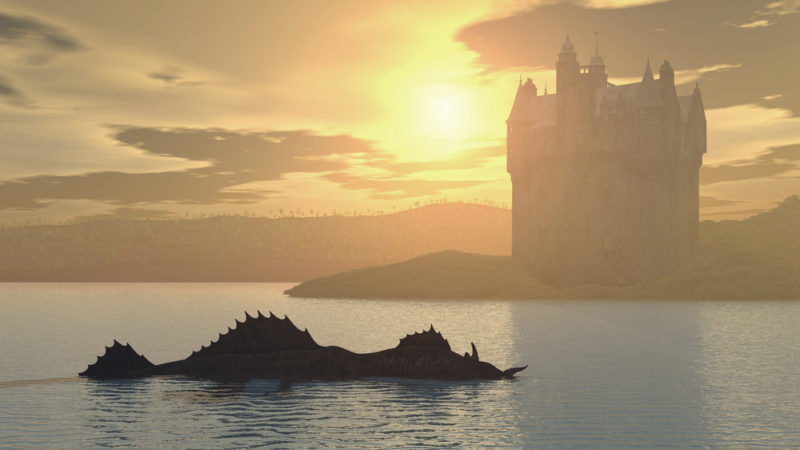
4 Mythological Tales to Follow Around the UK
The British Isles are steeped in thousands of years of rich history, with a culture and heritage which far outweighs the small size of the islands themselves! This wonderful part of the world also has more than its fair share of myths and legends, with an array of tales ranging from the probably true to the downright bizarre!
Of course, each part of the UK has its own traditions and local history, which are ideal for learning more about the country and its people. If you’re planning a fun-filled family staycation this year, why not consider taking a trip to one of the four corners of the UK and explore some of the diverse history and wonderful landscapes that are on offer?
Mythological UK
To whet your appetite and pique your curiosity, here are four of the most famous legendary tales from around the UK.
Robin Hood
Robin Hood is arguably the most infamous outlaw in the world, a mysterious man who reportedly robbed the rich to give to the poor. There are countless different versions of the Robin Hood tale in circulation today, which means that it can be hard to separate fact from fiction. However, when you cut away the glamour of Hollywood and the Disney effect, the real story of Robin Hood is much simpler.
It is thought that the real Robin Hood was born around 1160 in South Yorkshire, and quickly became a popular folk hero due to his kindness to the poorest members of society. It is known that he spent time in Sherwood Forest, a fact which has caused Nottinghamshire’s love affair with the outlaw to continue to this very day. Today, the county is rife with tales of Robin Hood and his band of merry men, but as always, the line between fact and fiction is blurred.
One tale surrounding Robin Hood states that Robin Hood and Little John took part in an archery contest in Whitby (coincidentally, the town that was forever immortalised in Dracula, Bram Stoker’s classic Gothic masterpiece). Both men shot an arrow from the roof of the Abbey, which fell at Whitby Lathes – the fields where the arrows landed were named as Robin Hood’s Close and Little John’s Close respectively.
Another key place to visit on the Robin Hood trail is the hero’s final resting place, in Kirklees Park, near Huddersfield. It is said that while on his deathbed in Kirklees Priory, Robin loosed an arrow and requested to be buried at the point where the arrow landed. Little John honoured Robin’s final wish and today, a mound can still be seen in Kirklees Park where his body is said to rest.

The Giants of the Causeway
The Giant’s Causeway is one of the most impressive natural wonders of the world, and as legend has it, was formed as a result of two giants fighting. One of these giants was Finn McCool, who called Northern Ireland home. His opponent was Benandonner, who threatened McCool from Scotland, across the Irish Sea. McCool retaliated by tearing up massive chunks of the Northern Irish coastline and throwing them into the sea, paving a path across the water to Scotland.
Unfortunately, this turned out not to be the best idea as Benandonner was large even for a giant, far outsizing McCool, who retreated to Northern Ireland and was disguised as a baby by his smart wife. Upon arriving in Ireland, Benandonner saw McCool and realised that if the baby was that big, how big would the father be! In a hurry to get back to the safety of Scotland, Benandonner tore apart the newly-created Causeway to protect himself – thus, the Giant’s Causeway that you can see today was born.
In addition to the Causeway itself, there are numerous other awe-inspiring places to visit in Northern Ireland and along the Antrim Coastline. The imposing Dunluce Castle is sure to take your breath away, while Carrick-a-Rede rope bridge is a must-visit for adrenaline junkies and fans of hit TV show Game of Thrones.
Nessie
The story of Nessie is one of the most infamous enduring legends in the world, but how much truth is there to the tale? According to legend, Scotland’s Loch Ness is said to be home to Nessie – a dinosaur-like beast who has lived in the loch for thousands of years. The earliest known sighting was by Saint Columba, an Irish monk in the 6th-century. Ever since then, Nessie has been sighted on a semi-regular basis, but the mystery continues to this day. Maybe you will be lucky enough to catch a glimpse of this elusive monster for yourself!
Nessie is far from the only mythological beast that is said to haunt the waters of Scotland’s shores and many lochs. Kelpies – sinister water horses – roam the lochs and rivers, waiting for unsuspecting prey to lure to their deaths in the murky depths below the surface. When visiting Scotland, make sure to keep your wits about you at all times, just in case…

Welsh Dragon
Proudly depicted on the Welsh flag, the dragon has been associated with Wales for thousands of years. One common myth is that the Welsh Dragon was slain by St George, Patron Saint of England, but sources seem conflicted about whether the dragon was the Welsh Dragon, or indeed if the event even took place at all!
Another fascinating story associated with the Welsh Dragon surrounds the picturesque village of Beddgelert in Snowdonia. You may already be familiar with the name and possibly even the story of Gelert the faithful hound, but long before his time, Beddgelert was home to a Celtic King named Vortigern who decided to build a fortress at Dinas Emrys, a hillock just outside the village.
After encountering unexplained issues which interrupted the construction, Vortigen sought advice from a young boy who – as chance would have it – turned out to be Merlin, the infamous Arthurian enchanter. Merlin warned Vortigern that he was building his fortress above an underground lake where two dragons were sleeping; upon being disturbed by Vortigen’s curious men, the dragons began a fight which continued until the red dragon triumphed over the white. According to Geoffrey of Monmouth, a great scholar of the time, this was a prophecy forewarning the arrival of King Arthur.
Today, the red dragon is immortalised on the Welsh flag which can be seen proudly flying across the country. If you do visit the charming town of Beddgelert, why not escape the crowds around Gelert’s grave and instead, see if you can discover the history of Dinas Emrys for yourself?
Are you intrigued by any of these tales? If you have the chance, getting to see the actual places that inspired the stories really is the perfect way to bring them to life in the most perfect way!
This is a collaboration
Share the love.
Related

A Weekend in the City - Liverpool
You May Also Like

Hello!
January 27, 2016
“I am a mountain, I am a sea, You can’t take that away from me”
July 5, 2016


